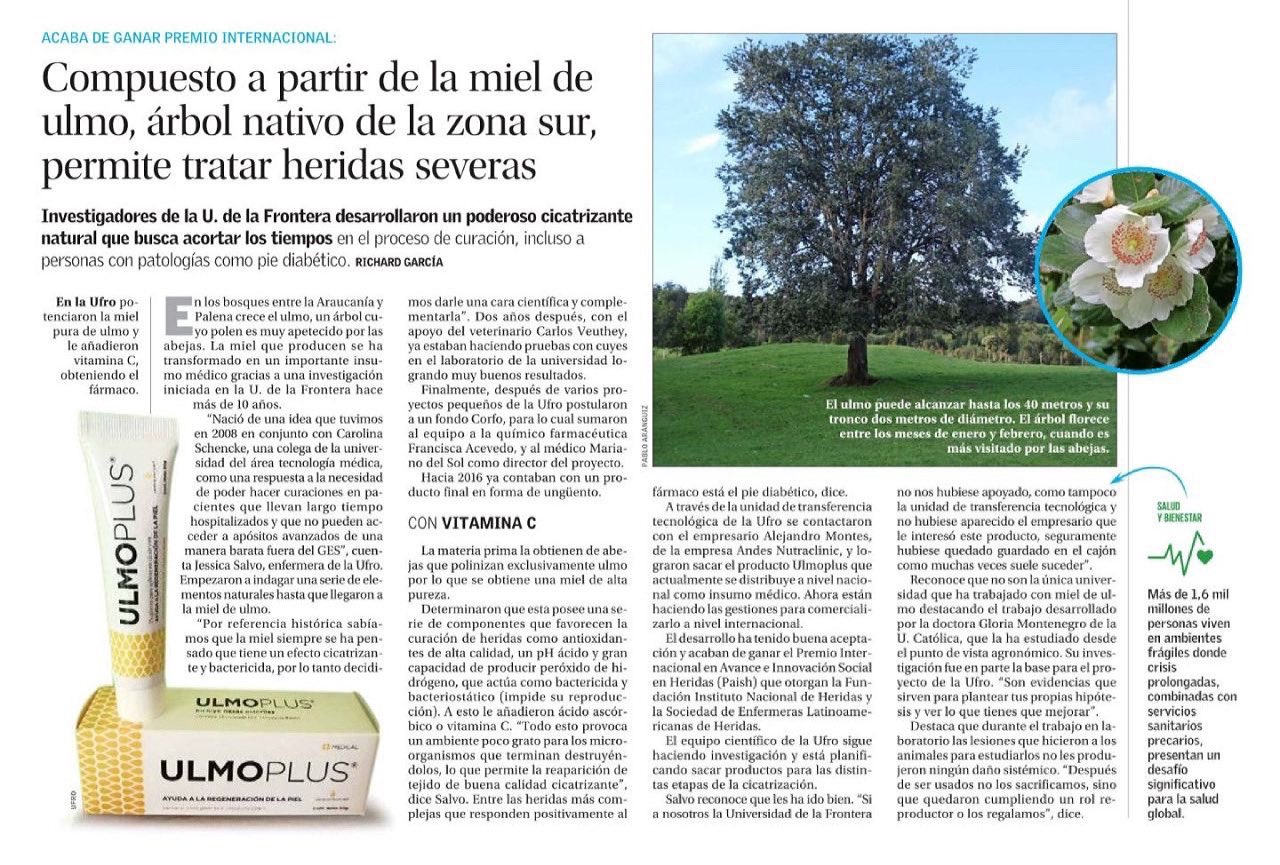
https://twitter.com/UfroInnovacion/status/1382768331376238593?s=20 https://twitter.com/UfroInnovacion/status/1382768331376238593?s=20
Información Apícola desde la Araucania // Beekeeping Information from Araucania Chile

https://twitter.com/UfroInnovacion/status/1382768331376238593?s=20 https://twitter.com/UfroInnovacion/status/1382768331376238593?s=20
 |
| Foto del ChinoHerrera tomada en Coihayque 29102016 |




Look Out Manuka…Myrtle’s On The Way
Alan Harman
Honey from an Australian native myrtle tree has the most powerful anti-bacterial properties of any honey in the world and could be used to treat antibiotic-resistant bacterial infections that commonly occur in hospitals and nursing homes.
Brisbane-based researchers say myrtle honey has very high levels of the anti-bacterial compound, Methylglyoxal (MGO), and outperforms all medicinal honeys available on the market, including New Zealand’s manuka honeys.
Led by the Queensland Alliance for Agriculture and Food Innovation (QAAFI), a partnership between the University of Queensland and the Queensland government's Department of Employment, Economic Development and Innovation (DEEDI), the research is being carried out in conjunction with the Australian Organic Honey Co. and Medi Bioactive Australia.
The project involves comprehensive trials with honey harvested from a native species of myrtle (leptospermum polygalifolium), which is distributed along the Australian eastern seaboard from the south coast of New South Wales to Cape York, Queensland.
Australian Organic Honey Co. and Medi Bioactive Australia chief executive Carolyn MacGill says the findings show anti-bacterial potency levels that could allow for the development of highly effective anti-bacterial treatments.
“We have had MGO readings in excess of 1,750 mg/kg in certain batches of honey,” MacGill says. “This would make this range of honeys one of the most potent in the world.”
Honeys investigated by the research group were effective as anti-bacterial treatments when used in the range of 500 – 1,750 mg/kg MGO to prevent the growth of methicillin-resistant staphylococcus aureus (MRSA), a common bacterial infection in hospitals and community facilities where residents are immune challenged, such as nursing homes.
Chief researcher on the project, QAAFI scientist Yasmina Sultanbawa says the potency of the honeys mean only a small amount is required to fight infection.
“The sheer strength, due to high levels of active compounds in these honeys, has meant that we have been able to completely inhibit MRSA for example in in-vitro studies with a relatively small quantity of the honey,” Sultanbawa says,
“This means potential products could maintain significant levels of anti-bacterial activity even in surface wounds where the honey is diluted in the bed of the infection.
“Investigations into unconventional remedies that are non-toxic and unlikely to result in resistance to the treatment, such as the QAAFI research into bioactive honeys, is very promising.”
MacGill says the potential of the honeys could ultimately result in a range of highly sought-after products.
“Our research to date has produced overwhelming results in the quest to inhibit the very common infection MRSA at very low percentage rates of application,” she says.
“This could provide enormous benefits for Australian and international medical fraternities and their patients.”